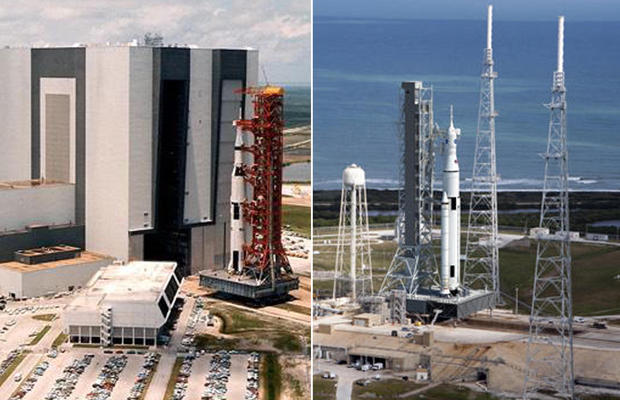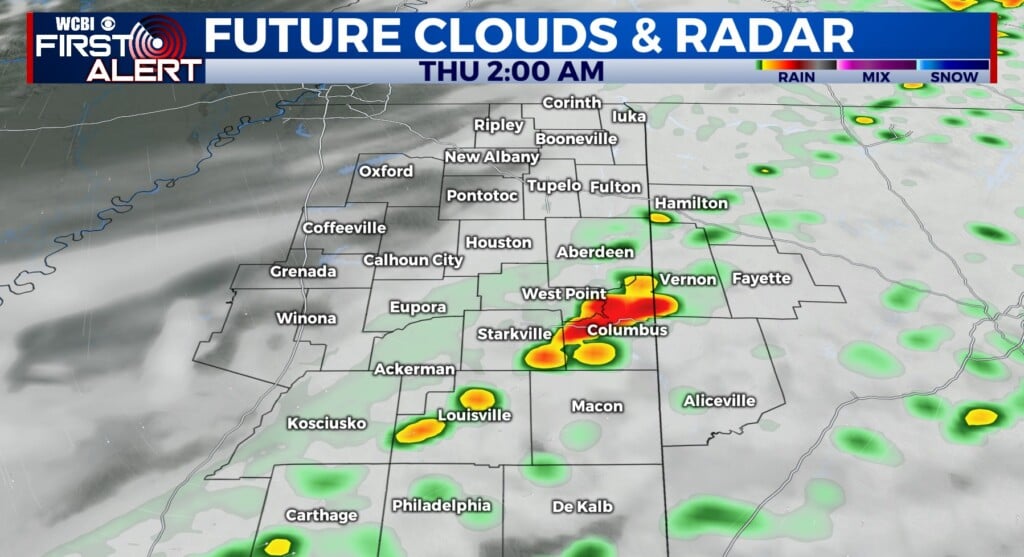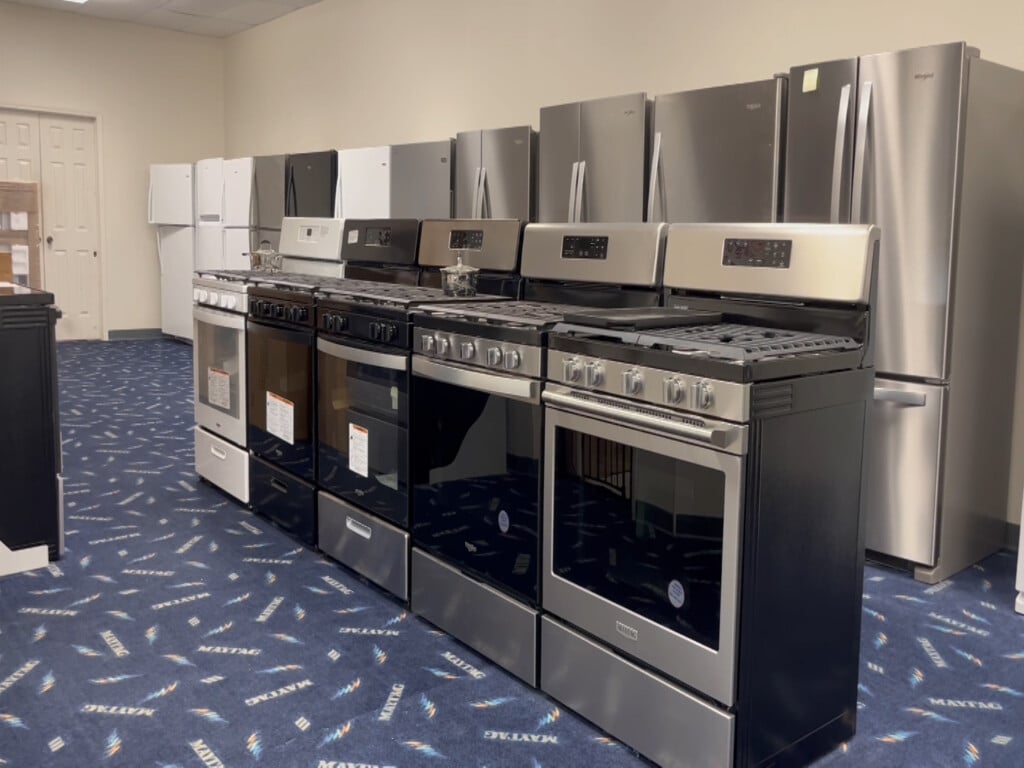How much did it cost to land on the moon?
In 1961, when President John F. Kennedy committed the nation to sending an astronaut to the moon “before this decade is out,” the federal budget enjoyed a surplus and economists were calling for government spending to stimulate the economy.
Even so, the final price tag still boggles the mind. Between 1960 and 1973, NASA spent $28 billion developing the rockets, spacecraft and ground systems needed for what became the Apollo program. According to a recent analysis by the Planetary Society, that translates into an estimated $288.1 billion in inflation-adjusted dollars.
That’s roughly equivalent to spending NASA’s current annual budget on a single project and sustaining that effort for more than a decade.
Now, 50 years after the first Apollo moon landing, NASA is aggressively pursuing a Trump administration directive to return astronauts to the lunar surface in 2024. After five decades of technological progress, NASA will not be starting from scratch, and the total cost will be much lower than the price tag for Apollo.But it will not be cheap, and billions in additional funding will be required.
The space agency has not revealed any detailed cost estimates, and it’s not yet known whether Congress will go along. But a new Gallup poll shows most Americans continue to support space exploration.
“Solid majorities of Americans feel that NASA’s budget is justifiable and that it should be maintained or increased,” the polling organization wrote on its website. “The 1969 moon landing’s upcoming anniversary may have elevated the historic achievement in Americans’ minds as of late, as their recall of the first man on the moon is stronger than it was 20 years ago.
“Americans are also slightly more positive in their views of the space program’s performance — which could be key to seeing NASA’s continued funding as the agency works toward achieving its next feat.”
The Apollo 11 anniversary prompted the Planetary Society to reassess how much the world’s first moon program ultimately cost.
Figuring out the true cost of Apollo mission
Casey Dreier, author of the analysis and senior space policy adviser for the Planetary Society, said the analysis was conducted because the historical record is incomplete, difficult to unravel and, in some cases, simply incorrect.
Given the Trump administration’s directive to send astronauts back to the moon by the end of 2024 in the newly named Artemis program, budget estimates for the Apollo program and the money actually spent provide valuable insights into hurdles the new moon program will face on Capitol Hill.
“How much was spent on Apollo, and when, is relevant as NASA has once again been directed to return humans to the moon,” he writes on the Planetary Society website. “To properly evaluate the seriousness of this directive, it makes sense to compare its spending proposals to the one data point we have for a successful human lunar mission.
“How much money did it take to do it the first time? How was it spent? And, perhaps most importantly, when did the money show up?”
In reconstructing the cost of Apollo, Dreier evaluated official NASA budget submissions to Congress between 1961 and 1974, actual spending as reported by the space agency and countless supporting documents.
To adjust the results for inflation, he used NASA’s New Start Index, designed specifically for aerospace projects, which is believed to provide more accurate insights compared to the Consumer Price Index, which focuses on household and consumer goods.
“The second method is to adjust the costs so that they occupy the same relative share of the nation’s economy, or Gross Domestic Product (GDP), over time,” Dreier wrote. “In other words, if Apollo occupied 2 percent of GDP in 1965, what is the equivalent of 2 percent of GDP in 2019?
“This approach answers the question: ‘If the U.S. were to allocate resources to a space project to the same extent as it did for the lunar effort, how much would NASA have to spend today?’ Think of this as a statement of economic priority.”
The numbers, adjusted for inflation, are difficult to imagine in today’s political climate.
In current-year dollars, the analysis shows, the Apollo command and service modules cost the equivalent of $39 billion to develop, the lunar module ran another $23.4 billion, and the giant Saturn family of rockets and the engines required to boost astronauts into Earth orbit and beyond cost nearly $100 billion to design, test and launch.
At the peak of Apollo program spending in 1966, Dreier says, NASA accounted for roughly 4.4% of the federal budget — 6.6% of discretionary spending — more than the Manhattan Project that developed the first atomic bomb.
In terms of relative GDP, that is, the spending required in 2019 to account for the same share of the economy as the Apollo project did in the 1960s, the Planetary Society calculates the equivalent of $702.3 billion would be required.
John Logsdon, a noted author and space historian, says even Kennedy had second thoughts about the enormous expenditures required to reach the moon.
In a meeting with NASA’s administrator in September 1963, the president “worried that it’s going to become a political liability for him for the ’64 re-election,” Logsdon said. “And he says popular support is waning, but we’re kind of in mid journey and people will be glad we did it once it happens.”
The day before Kennedy was assassinated in Dallas, he gave a speech in San Antonio “where he says we’ve thrown our cap over the wall of space and we have no choice but to follow it,” Logsdon said.
Had the president not been shot, “my judgment is that, indeed, he would not have turned off the clock and that he would have continued to support the program,” Logsdon said. “If cooperation (with the Soviet Union) was possible, he would have sought cooperation. But if it wasn’t, I think he would have moved ahead.”
A different calculation today
Today’s political and economic realities are vastly different than the ones Kennedy faced.
“The one thing that people forget about Apollo is that the federal budget was in surplus and economists were calling for government spending to stimulate the economy in 1961,” Logsdon said. “So the kind of trillion dollars a month deficit spending we’re doing wasn’t there at all. And I think that … may be the overriding constraint on doing anything like Apollo.”

At left: The Saturn 5 rocket that boosted the Apollo 11 mission to the moon is hauled from NASA’s Vehicle Assembly Building to the launch pad in 1969. At right: An artist’s impression of a Space Launch System rocket being prepared for a future launch to the moon. NASA
NASA’s 2020 budget request, including $1.6 billion in supplemental funding to kick-start the Artemis moon program, comes to $22.6 billion. Of that total, $6.4 billion is directed to exploration, a 27% increase over 2019 levels.
Since 2005, NASA has spent by some estimates approximately $16 billion developing the re-purposed Orion crew capsule that will carry astronauts to and from the moon in the Artemis program and nearly $20 billion, according to at least one estimate, developing the huge Space Launch System (SLS) rocket needed to launch the lunar landing missions.
Both programs underwent extensive modifications, driving up costs, as program goals changed between the Bush, Obama and Trump administrations.
As it now stands, an initial unpiloted SLS test flight is planned for late next year or, more likely, 2021 with the first piloted flight of an Orion capsule expected in the 2022-23 timeframe. The first Artemis moon landing, using the third SLS booster and a yet-to-be designed lander, is planned for 2024.
“To date, the White House has proposed an additional $1.6 billion for Project Artemis, on top of the $5 billion spent annually on the Space Launch System, Orion, and related ground systems,” Dreier writes.
“Compared to Apollo, this is a relatively modest investment. Looking forward, we should expect significant increases in spending associated with an accelerated lunar effort or adjust our expectations accordingly.”





Leave a Reply